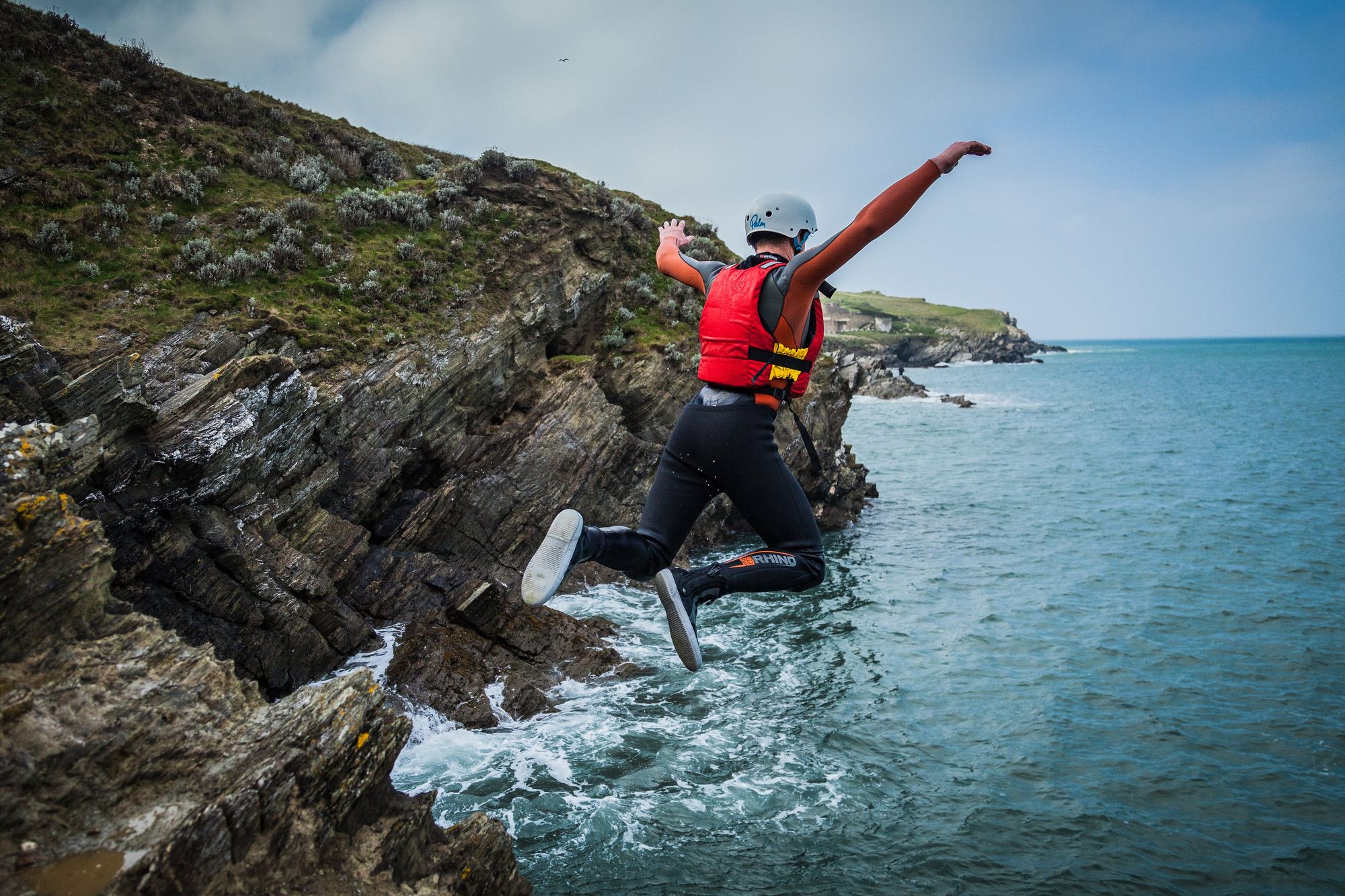Coasteering is a cross between rock pooling and an obstacle course. It is similar to canyoning: you are moving on foot and will probably get wet. But there are no ropes involved, normally, and of course it's on the coast - not in a canyon. The aim of coasteering is to traverse the "impact zone", where the sea hits the land, in the most fun way possible.
What is Coasteering?
Coasteering is a relatively new adventure activity. The word first appeared in a coastal climbing book in the 1970s. But its invention, and evolution into what we know today, is attributed to surfers in Pembrokeshire in the 1980s. This is where it was first developed commercially and Pembrokeshire is still one of the top coasteering destinations in the UK.
The word coasteering is a combination of 'coast' and 'mountaineering' - although we reckon it's really more like scrambling than mountaineering. Not that coastambling is quite so catchy... and frankly sounds a bit slow. The National Coasteering Charter describes coasteering as, "Exploring and journeying through the impact zone between the levels of high and low, often including total immersion in seawater." By impact, they mean where the sea hits the land.
How does it work?
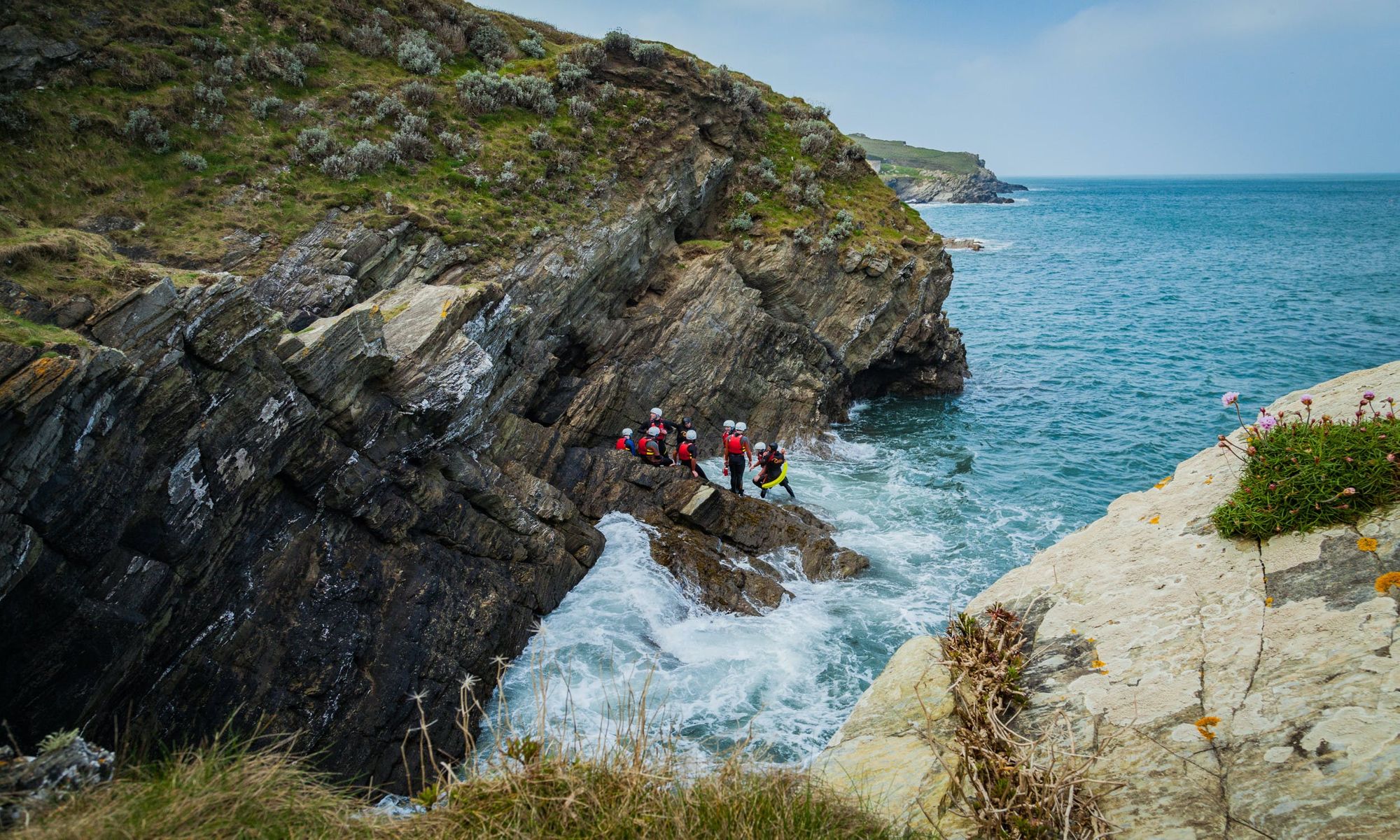
The basic premise of coasteering is to travel along the line where the sea meets the land. You'll be in and out of the water, climbing over boulders or swimming across pools. You could very well head inland from the cliff, exploring narrow gullies and caves, or get hit by an overly excited wave. It's just happy to see you.
Coasteering has an association with jumping off eight metre cliffs into deep saltwater pools. You can totally do that, but there's far more traversing than there is plunging into the ocean. It's more about the complete journey and very high jumps are often optional adrenaline kicks. Common features in coasteering routes include scrambling up and climbing over rocks, or swim-walking through gullies and squeezes. You might also get to experience features created by the tides like sluices, whirlpools and pour-overs.
As far as method, there's no right or wrong way to tackle a route. Alright, so upside down and backwards would be a little non-standard. But you can scramble, clamber and swim in whichever way you find easiest. You are entirely self-propelled: there are no boats or fixed ropes, or other assistance. Free movement is very much in the spirit of coasteering.
You can coasteer all year around, thanks to a warm wetsuit (more on that in a minute). Some routes only require doggy-paddle levels of swimming ability, whereas others want to see your 50m swimming badge as standard. Given how close you are to open water, we reckon it's better to err on the safe side, especially on the more extreme routes.
Coasteering Equipment List
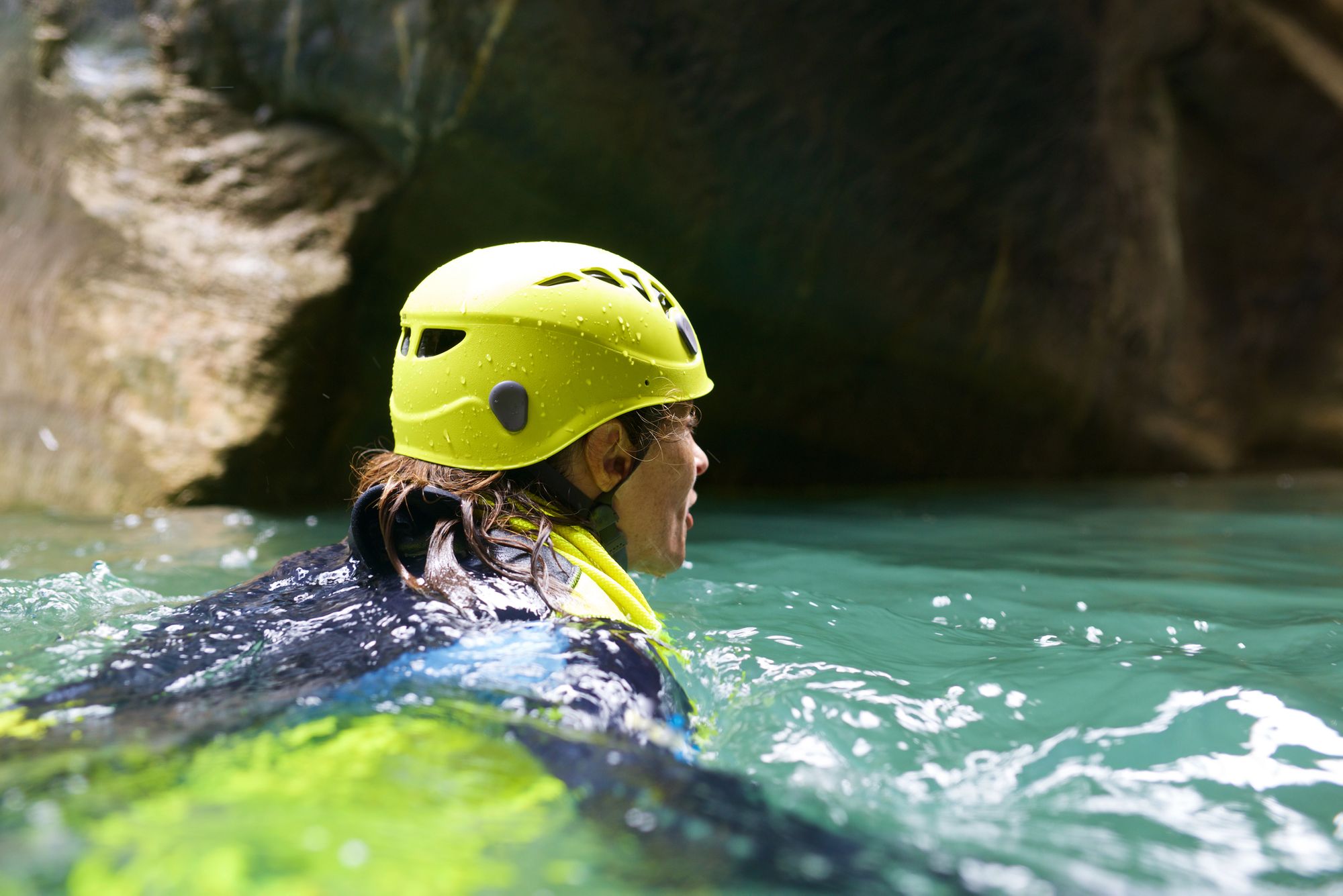
You don't need much to go coasteering. Part of the whole ethos of this adventure is about the simplicity of moving along the coastline. So you don't need any big bits of kit like a kayak or a paddleboard. Most coasteering kit list is about keeping you warm and protecting you from damage.
Firstly, you'll need a full length wetsuit to keep you nice and warm, as you clamber in and out of the (probably cold) sea water. Even if the sea is warm, you'll quickly chill off in a the coastal breeze without a friendly neoprene hug. Similarly, it might be okay to walk down the beach barefoot, but that's an absolute no-no for coasteering. You'll be scrambling over jagged rocks that could cut your feet open. Either a pair of wetsuit boots or a pair of old trainers should do the trick. We all know how soft and wrinkly hands get in the bath, so you might like to wear gloves too.
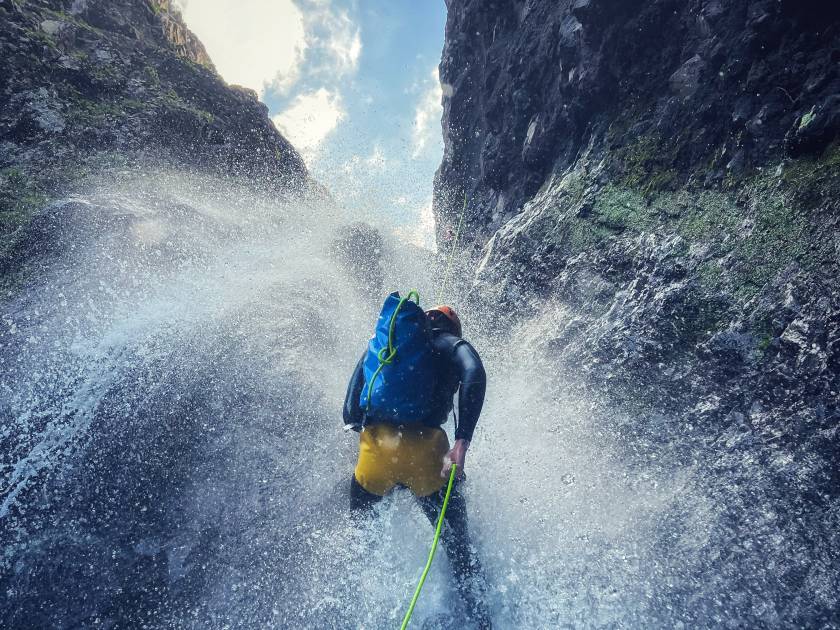
Next up, a helmet and buoyancy aid are very important. The helmet keeps your head safe from any accidental knocks and the buoyancy aid makes you extra floaty. Both give you that added level of safety, letting you focus more on the fun. So you can dive bomb into a pool thinking "Geronimo!" rather than "What if I hit my head on a massive rock or sink?"
A coasteering instructor might bring a few extra bits too, like a first aid kit and throw lines (floating ropes, just in case). Some also use Peterson Rescue Tubes which are like inflatable buoys and make great markers for where to jump into a pool. They double up as life floats too.
Finally, depending on where your coasteering adventures take you, you might want to pack a torch for caves or goggles for underwater exploration.
Is it safe?
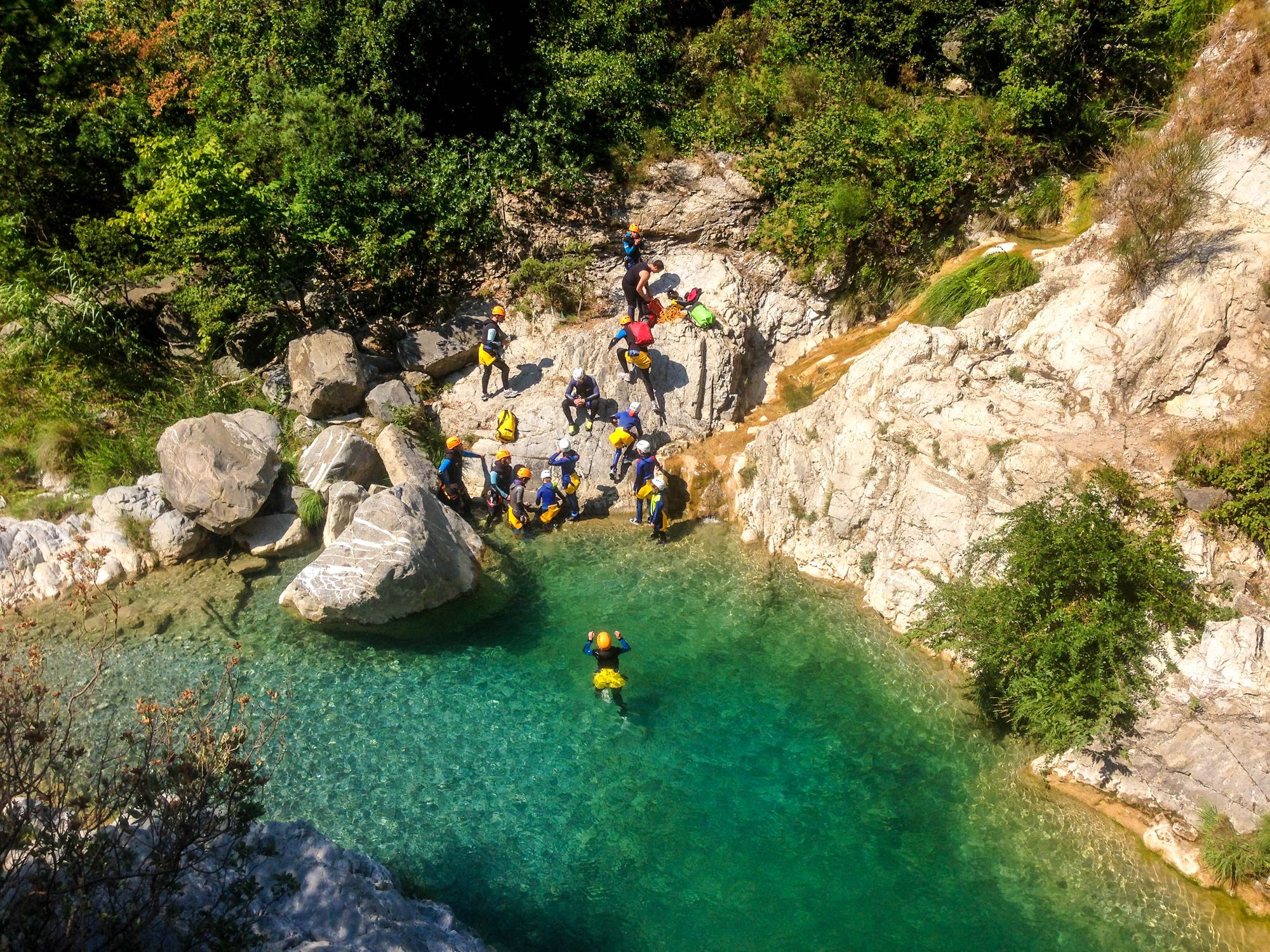
Most people associate coasteering with jumping off cliffs into the sea. This means it often gets confused with tombstoning: holding your arms and legs tight to your body and jumping off an enormous sea cliff. As a teenager living near the coast, I was never sure if the tombstone was referring to the shape people make or the likelihood of death. Coasteering is nowhere near as bonkers as that. Particularly if you're accompanied by a local guide.

Your biggest hazards on a coasteering route are rock impact, proximity to the sea and cold weather. Although some of these can have pretty severe consequences, they are easy to mitigate if you're sensible, by taking good precautions and equipment. However, coasteering is not the kind of activity that beginners would normally do without a guide.
As with anything involving the coast and the sea, you don't know what you don't know. A lot of knowledge comes from local experience, like knowing where the rip tides are and whether you're about to be mobbed by a whole cliffside of grumpy sea birds. That's why coasteering is almost always done with a qualified instructor. They can minimise risk while maximising fun with their knowledge of the local area and all the best routes.
Where can I go Coasteering?
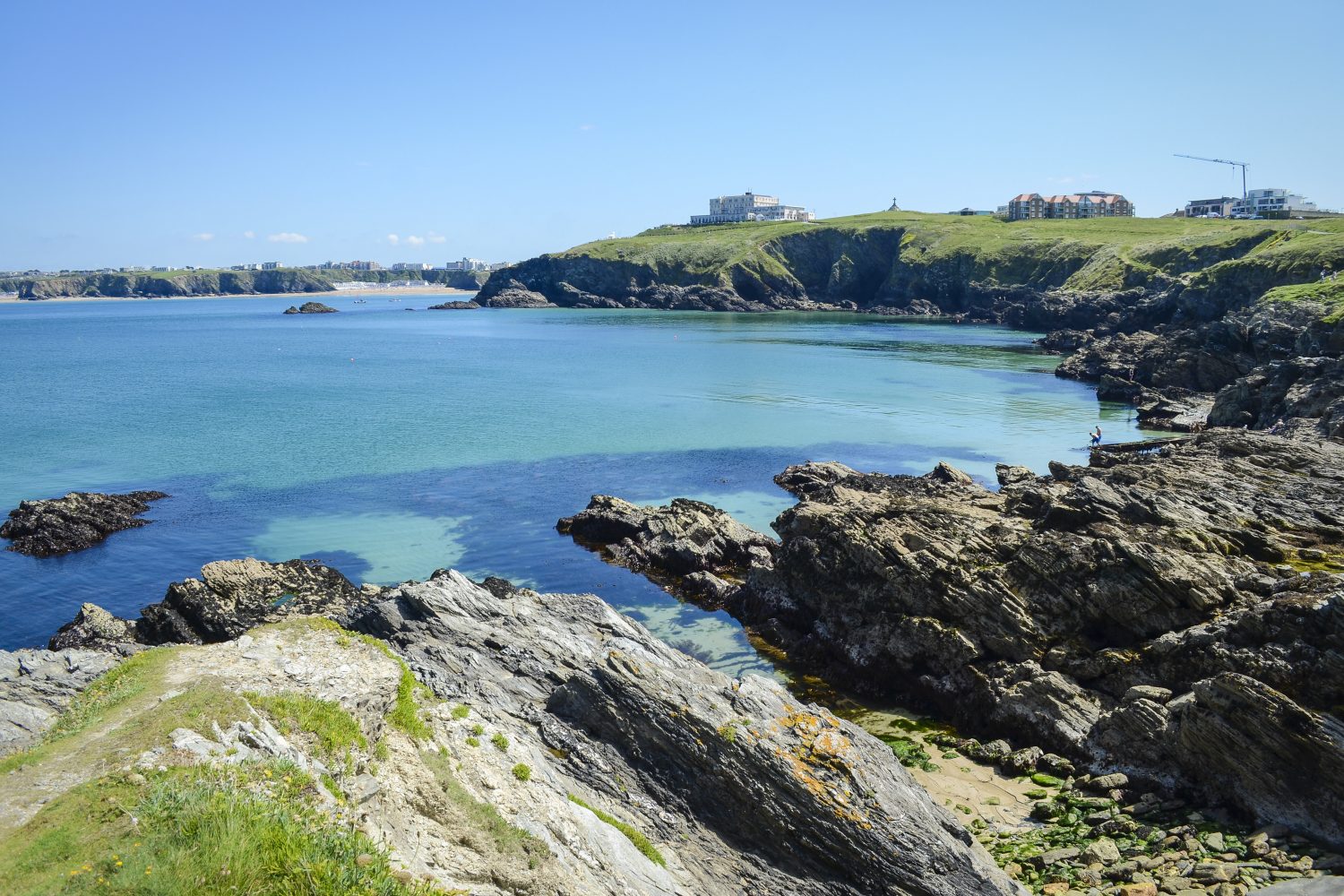
As it was invented in the UK, coasteering is not a word you often encounter in other countries. But within the UK there are more and more venues setting up, to make the most of over 30,000 kilometres of rugged and interesting coastline.
The north Cornwall coastline provides some of the best coasteering Cornwall has to offer. Where the Atlantic Ocean meets the wild Cornish cliffs, once home to smugglers, there are plenty of nooks and gullies to explore. In particular, The Gazzle near Newquay is has ragged rocky coves that are protected from the wind - ideal for a coasteering outing. Although its name is less glam: gazzle means 'armpit' in Cornish...
Pembrokeshire, where it all began, and other parts of the Welsh Coastline have several established coasteering destinations. In fact, anywhere with an interesting shoreline will probably have coasteering not too far away. The south coast from Land's End all the way along to Dorset, Northern Ireland and even the Isle of Skye all have providers ready to take you on a coastal adventure.
To take the plunge on your first coasteering adventure, check out our Hiking and Canyoning in Madeira trip.


